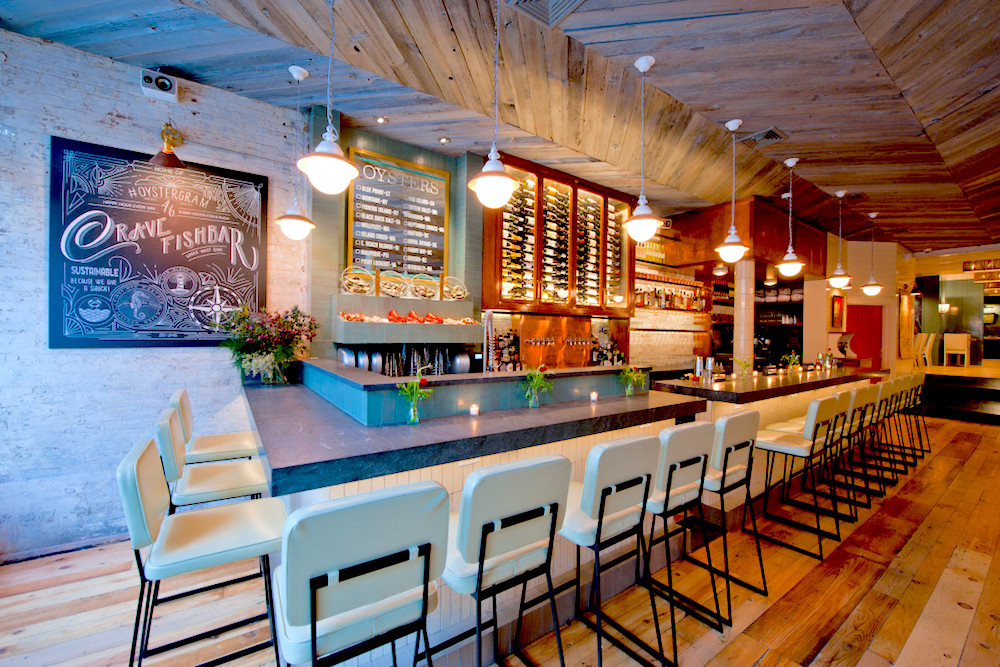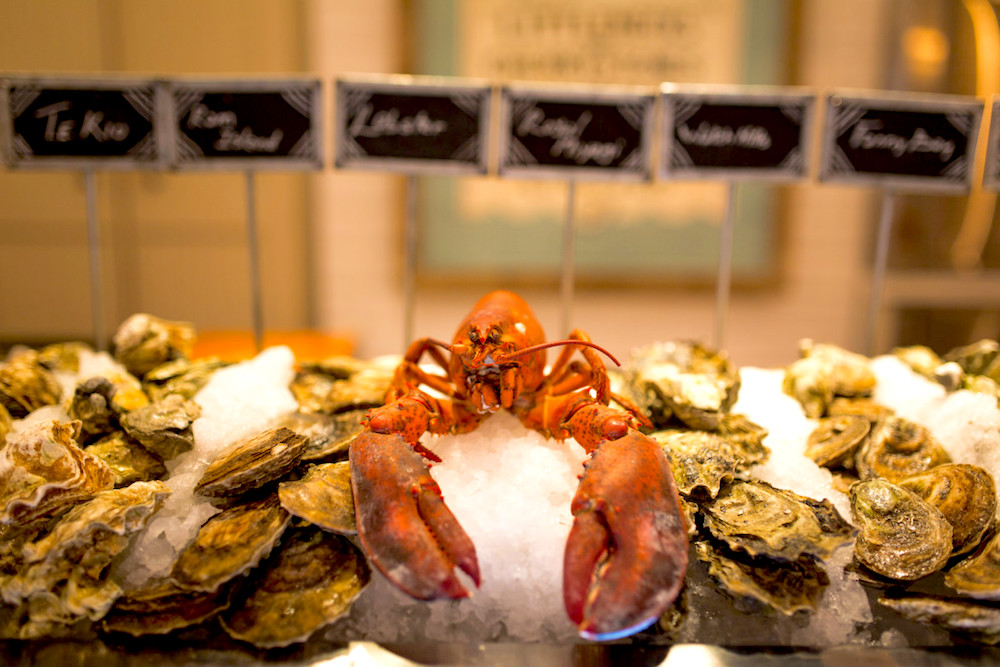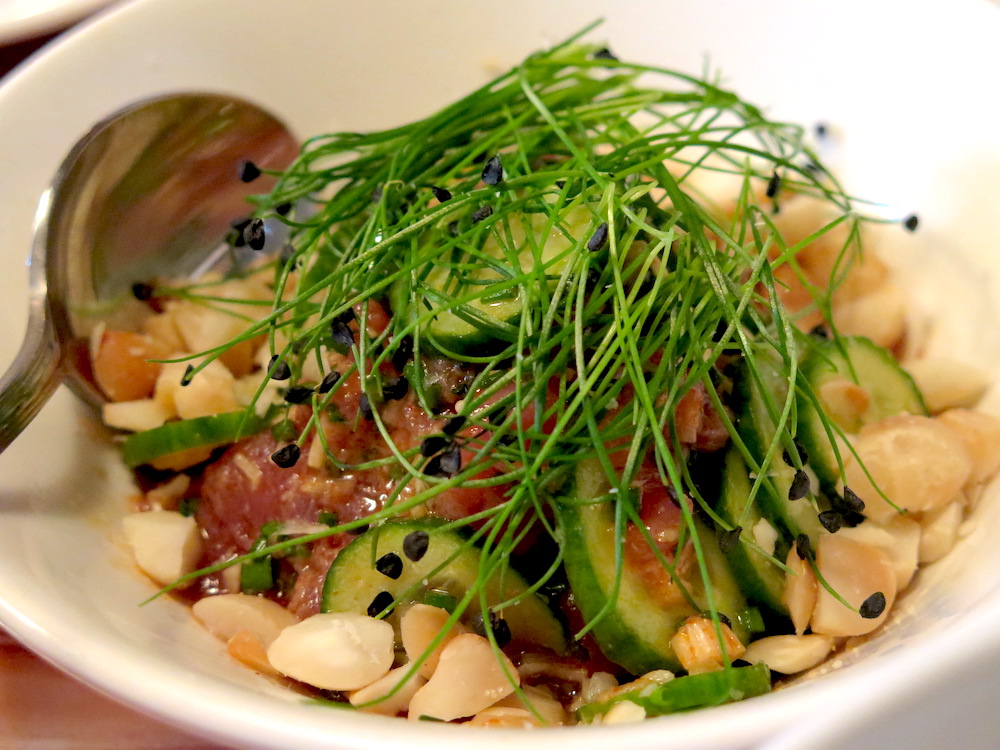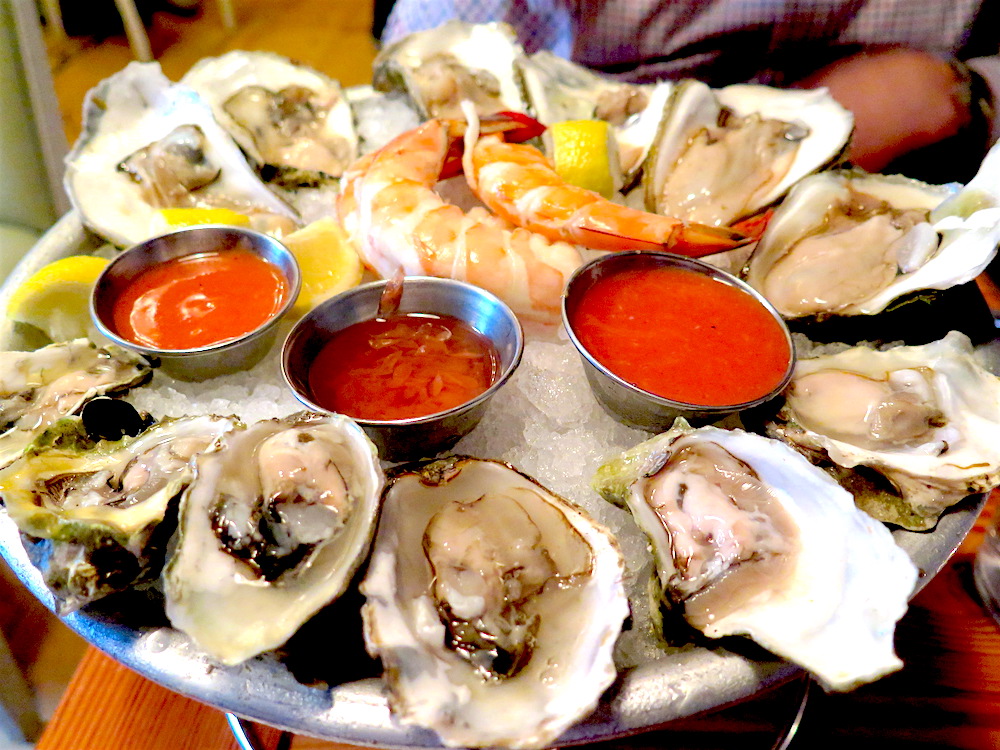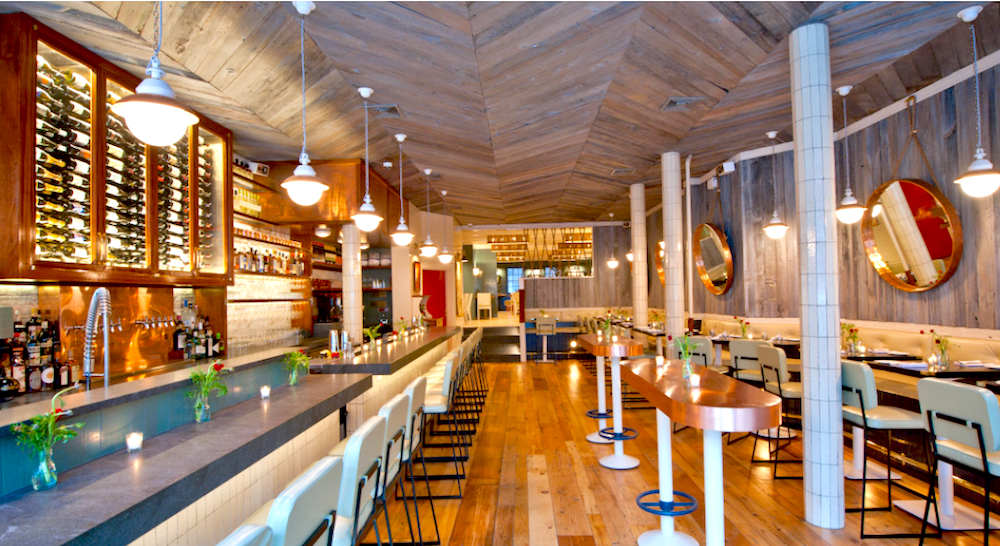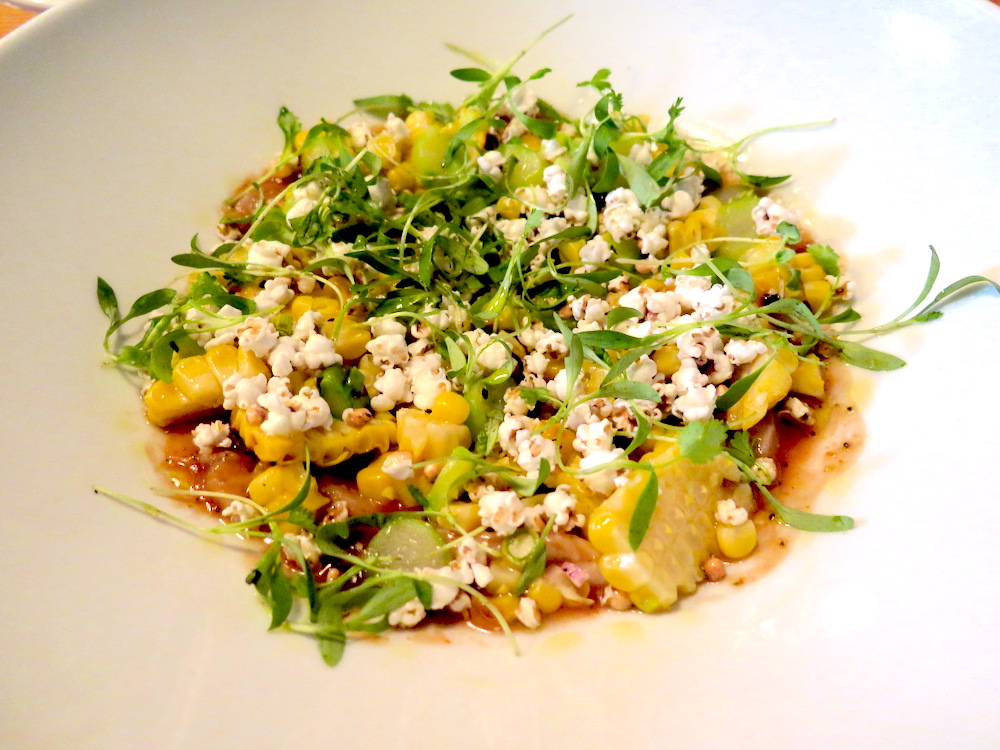Long before New York became the Big Apple, the city was known for the oyster. More than 350 square miles of oyster beds could filter the Hudson estuary in less than a week. Some marine biologists contend that New York Harbor once held half of all the oysters on the planet.
Long before pizza became ubiquitous, long before the bagel conquered the island, oysters were what New Yorkers ate: from oyster carts and oyster wagons, at oyster parties and from floating oyster barges—and at oyster cellars where it was all you could eat for six cents. New York was so oyster crazy that the city remained the undisputed oyster capital of the world throughout the 19thcentury.
More than a century later, Manhattan’s oyster renaissance is fully apparent at Crave Fishbar’s daily #Oystergram Happy Hour where all available in-house oysters—16 varieties of oysters from the East and West Coasts—are available for a dollar each. As a charitable partner of New York’s Billion Oyster Project, Crave Fishbar donates its shucked shells to further the natural oyster restoration efforts in New York Harbor. Given that the restaurant employs a team of expert shuckers for the thousands of bivalves it sells daily, there’s probably an underwater “midden” (or mound of shells) named for Crave Fishbar.
As aficionados of bivalve mollusks will tell anyone who will listen, oysters are rich in protein and minerals, which makes it justifiable to complement those 16 varieties with various other #Oystergram Happy Hour options, including red crab tostadas with cannelloni bean puree—and a yellowfin tuna poke vibrant with Persian cucumber and toasted macadamia nuts beneath a pile of herbaceous chive.
Amidst the convivial atmosphere percolating throughout the sleekly-designed restaurant, a pequin-infused tequila cocktail known as The Staycation merits its name: you’re in Manhattan but it feels like an era marked by a carefree abandon when oysters were plentiful and best enjoyed in abundance.
If you’re fortunate enough to encounter Crave Fishbar owner Brian Owens at the bar, it’s worthwhile to order another dozen and hear the fascinating backstory to the restaurant, which survived a crane accident and profited from a chance encounter with a diner to become a celebrated seafood house.
A born raconteur like his father Michael “Jesse” Owens, one of Ireland’s most well-known singers who performed at private events for the Kennedy clan in Hyannis Port, Owens opened the original Crave Fishbar in midtown in 2012 with partners Jason Steinthal and Executive Chef Todd Mitgang. The restaurant was the first NYC partner of Monterey Bay Aquarium’s Seafood Watch program, as well as a charter member of the James Beard Foundation’s Smart Catch Program. Or, as Owens attests, Crave Fishbar is sustainable because they give a shuck.
Owens and Mitgang initially bonded over a mutual love for ceviche in its myriad global incarnations, which is showcased at Crave Fishbar in a brilliant barramundi (or Asian sea bass) ceviche that marries the buttery taste of the pearly pink fish with the sweetness of corn, both fresh and popped, sprinkled in tiny nuggets with chopped asparagus and charred spring onion.
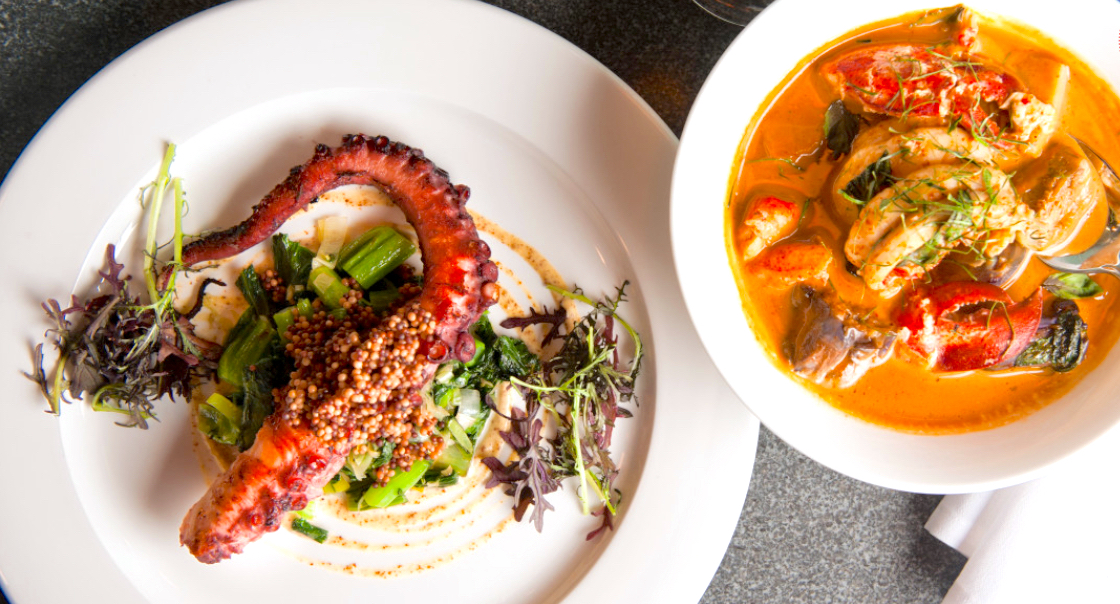
Plancha grilled octopus and lobster chu chee curry with Japanese eggplant at Crave Fishbar (photo by ©Crave Fishbar)
Mitgang’s tenure at downtown’s innovative Kittichai earned him plaudits for his Asian-infused flavor profile. One of Crave Fishbar’s most popular entrées is Mitgang’s lobster chu chee curry with Japanese eggplant. Equally flavorful and popular is Mitgang’s miso-glazed barramundi: the flaky, moist fish floating on a small pool of white miso and honey alongside plancha-grilled jumbo asparagus. A side of triple-cooked Brussels sprouts is as addictive as French fries—and probably equally delicious at the bar during Happy Hour.
As Beverage Director, Steinthal has curated a global wine list that dovetails perfectly with Mitgang’s Asian-influenced cuisine and includes several biodynamic and organic choices. Signature cocktails reflect the dining room’s nautical décor with names like Jolly Roger and Typhoon Martini, the latter made with housemade pickle brine.
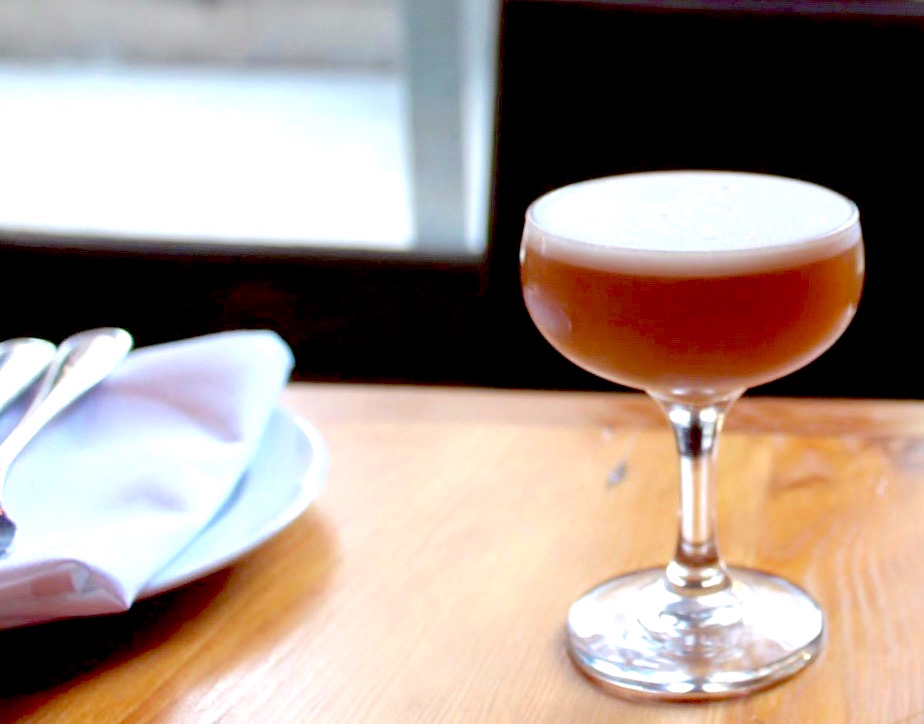
Signature cocktails reflect the dining room’s nautical décor with names like Jolly Roger and Typhoon Martini (photo by ©Crave Fishbar)
For dessert, Mitgang offers a chocolate chip cookie that might threaten to dethrone Levain for gooey goodness—though a brunch offering of croissant sticky bun served with whiskey vanilla bean icing is reason enough to make weekend reservations. As is an $18 add-on for 90 minutes of unlimited brunch booze. That sticky bun and the Boozie Smoothie, a gin-based avocado elixir, might also prove the perfect hangover cure. On Monday evenings, Crave Fishbar offers a moules fritesspecial—for those inclined to linger beyond the tempting happy hour.
During the course of an evening at Crave Fishbar—or one of those long and leisurely boozy brunches—it’s possible to gaze around the dining room packed with happy people and to feel for a few minutes as if Manhattan is once again the world’s oyster. And maybe with another dozen, all will be right with the world.

